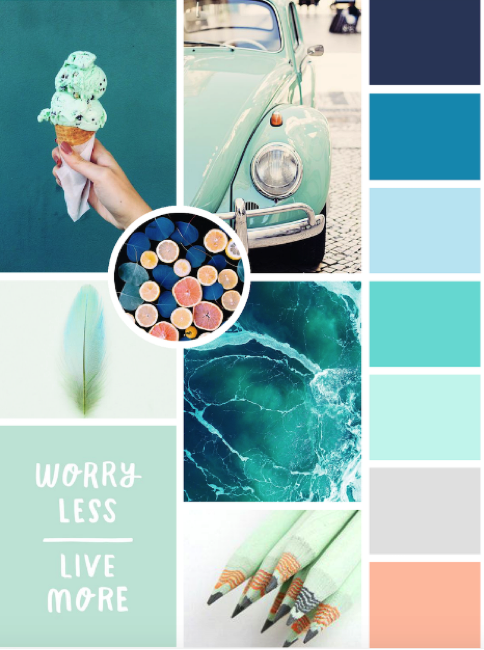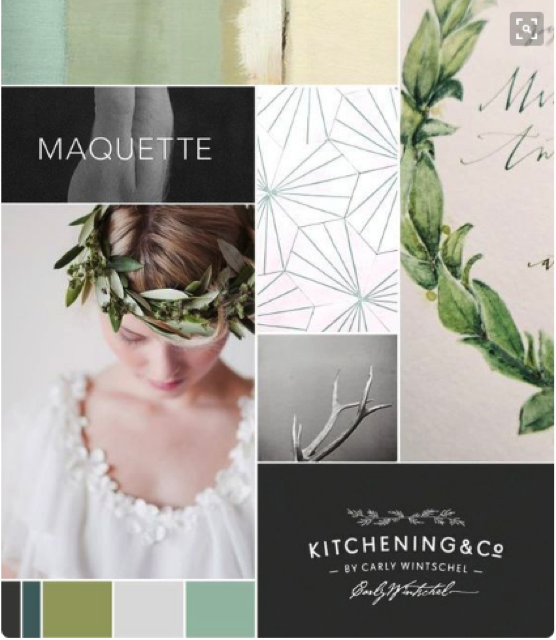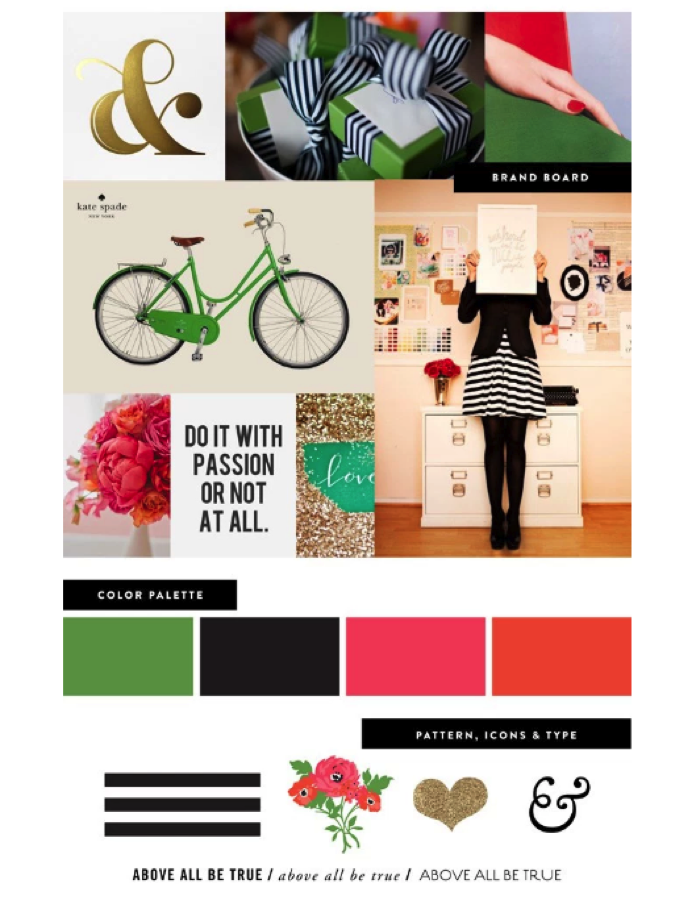Building a business and/or a brand is extremely difficult; it’s much more than just having a good idea. The idea itself is only the beginning. What an entrepreneur does with that idea, how they allow it to grow, is what will make or break a new business. Marketing is a huge part of that process. What good is a great idea if no one knows about it? Utilizing mood or vision boards– creative collages that bring together the photos, colors, fonts, slogans and more that make up a business or a brand- is a great way to get organized and begin building upon that initial idea.
Think of these vision boards as the Pinterest board for a start-up. Creative Bloq said it best when they wrote how hard it is to communicate “fluffy stuff” like feelings and design ideas. Creating a mood or vision board can save a business owner a ton of time and money by informally grouping together and testing out their ideas first and seeing others’ responses before actually paying money to act on them. Below are some more specific ways to use mood and vision boards in order to improve marketing for your small business.
Author’s note: For the sake of this article I’m going to use the two terms interchangeably as though they are the same thing (unless specified otherwise), but in all actuality a mood board is supposed to express emotions whereas a vision board is for a person’s creative “visions”. In terms of business marketing, however, the distinction shouldn’t matter. In fact, combining the two to create a mood/vision board is probably a more well-rounded way to market a brand.
-
Determine what the most important values and goals are for your business
Look for things that embody those key words: photos, colors, fonts, graphics, etc. Be creative and go with your gut. If something feels right, use it. It doesn’t have to make sense at this stage; that’s why you’re doing this preliminary work. Mood and vision boards can, and should, be revised at later stages and the elements that don’t fit can be removed and replaced by ones that do. It’s important to not discount something at this point because it could end up being important later. It might even take other opinions to make those important connections known (see number 3). If you discover the goals that you want to exist at the center of your business, and then you find details that symbolize those goals, more than likely you’ll end up with a common thread running through your board whether you tried for it or not.
-
Create the collage
Image credit: whitecornercreative.com
Choose your medium- digital or hard copy. A digital board has the potential to look really impressive and professional, but there’s something special about cutting things out and gluing them onto a piece of paper. It makes the creative process just a little more concrete. If you have the time, I’d suggest making a handmade board first, going through the revision and feedback process, and then finalizing it digitally. This Hubspot article lists many different online tools you can use to turn your design dreams into reality, or you can work with a web design company to help make it happen if what you’re after is a beautiful online brand.
Regardless of which route you choose, you should think outside the box. Find different textures and materials to use. Mix text, fonts, and photos. Not everything needs to be cut from a magazine or printed from Google Images. Consider going out into the world and taking your own, original photos. After all, you want your brand to be unique, right? Just keep your goals and values in mind and don’t stray too far from them. Find a large image that makes sense to you and then build your board around that image. It’s ok if you don’t end up using everything you’ve collected. The Brand Stylist says you should “Expect to throw out about 70% of the bits you originally shortlisted for a really well edited and concise board.”
Image credit: creativewomen’scircle.com
-
Share with an audience and elicit feedback
Image credit: bloglovin.com
You don’t want to do this too early because the board has the potential to appear unfinished and then your audience might not understand your vision, but then again you don’t want to wait until you think it’s absolutely “perfect”; at that point you’re apt to not want any negative feedback. Think about creating the board in stages, and then asking for audience feedback after every stage, knowing that you’re going to have to go back and make revisions. Also, don’t just listen to their words; watch their reactions as they’re viewing the board. Do their facial expressions match what their mouths are saying? It’s not uncommon for emotions to give something away that we might not want to say out loud. And after all, these boards are about the “mood” of a business or brand, so pay attention to the moods of your audience.
Image credit: thebrand-stylist.com
Regardless of how you choose to go about it, creating a mood or vision board is a great first step to building a brand and then learning how to market it. It’s never a bad idea to get all your creative ideas down on paper or on a computer screen; you might even surprise yourself by discovering an unexpected theme. Don’t be afraid to ask for feedback and then use those responses to further refine your ideas; after all, it’s other people who are going to potentially make up your target audience so you don’t want to ignore their opinions. Lastly, have fun and let your creative juices flow. Who knows what will happen?
If you’re feeling overwhelmed and/or looking for inspiration, check out this article on Creativemarket.com that lists a wide variety of mood and vision board examples. Have you created a mood or vision board for your business? Comment in the section below!





